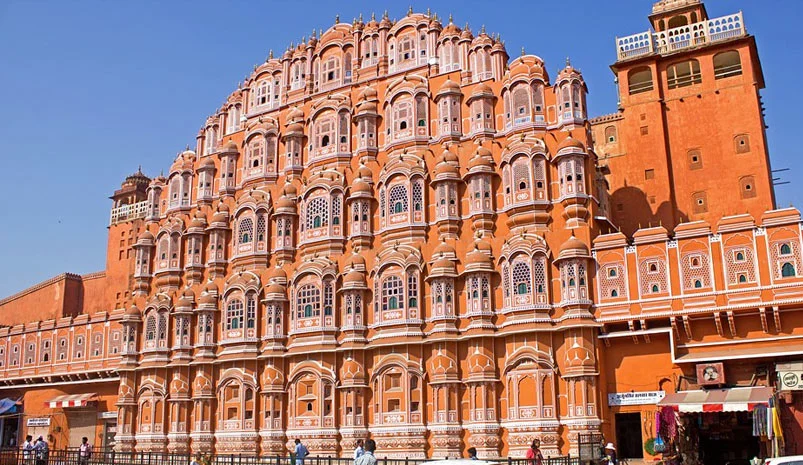Experience the Iconic Grandeur of Hawa Mahal
Discover the architectural marvel and historical significance of Hawa Mahal, the Palace of Winds, in Jaipur, Rajasthan
Introduction to Hawa Mahal
Hawa Mahal, also known as the Palace of Winds, is a magnificent five-story palace located in the heart of Jaipur, Rajasthan. Built in 1799 by Maharaja Sawai Pratap Singh, this iconic structure is a fine example of Rajput architecture, featuring 953 intricately carved windows that allow cool breezes to circulate through the palace. Hawa Mahal was originally designed to allow the royal women to observe street festivals and everyday life without being seen, in accordance with the purdah system.

Highlights of Hawa Mahal
Architectural Marvel
The unique facade of Hawa Mahal, resembling the crown of Lord Krishna, is one of its most captivating features. The red and pink sandstone structure, adorned with fine latticework and elaborate carvings, reflects the grandeur of Rajputana architecture. The honeycomb-like design of the palace's windows is both aesthetically pleasing and functional, allowing air to circulate throughout the building and keeping it cool even in the hot desert climate.
The Jharokhas
The 953 small windows, known as jharokhas, are the hallmark of Hawa Mahal. These jharokhas are beautifully adorned with intricate latticework, which not only adds to the palace's beauty but also allowed the royal women to observe the street life and processions without being seen. The jharokhas offer stunning views of the bustling city below, providing a glimpse into the daily life of Jaipur's residents.
Panoramic City Views
Visitors can climb up to the top floors of Hawa Mahal to enjoy panoramic views of Jaipur's vibrant cityscape. From the rooftop, you can see the City Palace, Jantar Mantar, and the bustling streets of the old city. The breathtaking view of the sunset from Hawa Mahal is particularly enchanting, making it a favorite spot for photographers and tourists alike.
Historical Significance
Hawa Mahal is not just an architectural wonder; it also holds great historical significance. It stands as a symbol of Jaipur's rich cultural heritage and the royal legacy of the Rajputs. The palace's design and purpose reflect the traditions and customs of the time, particularly the practice of purdah, which required royal women to remain unseen by the public. Exploring Hawa Mahal offers a unique insight into the lifestyle and traditions of the Rajput era.
Best Time to Visit Hawa Mahal
The best time to visit Hawa Mahal is during the winter months, from October to March, when the weather in Jaipur is cool and pleasant. The early morning or late afternoon is ideal for visiting, as the soft sunlight enhances the beauty of the palace's facade, making it an unforgettable sight.